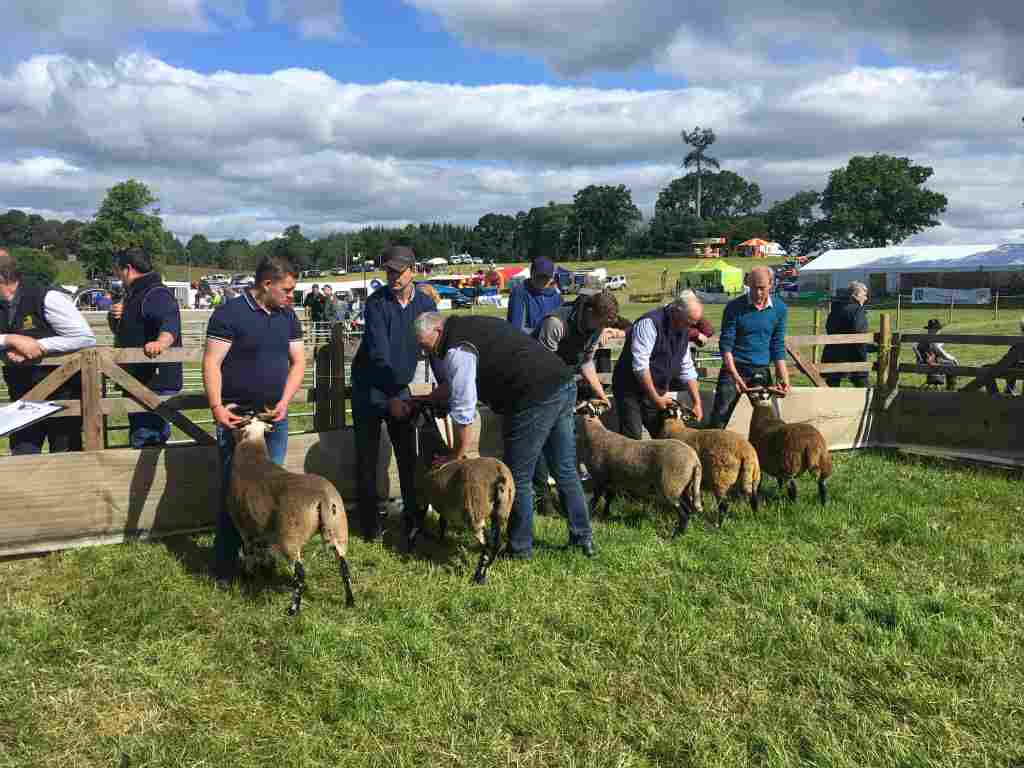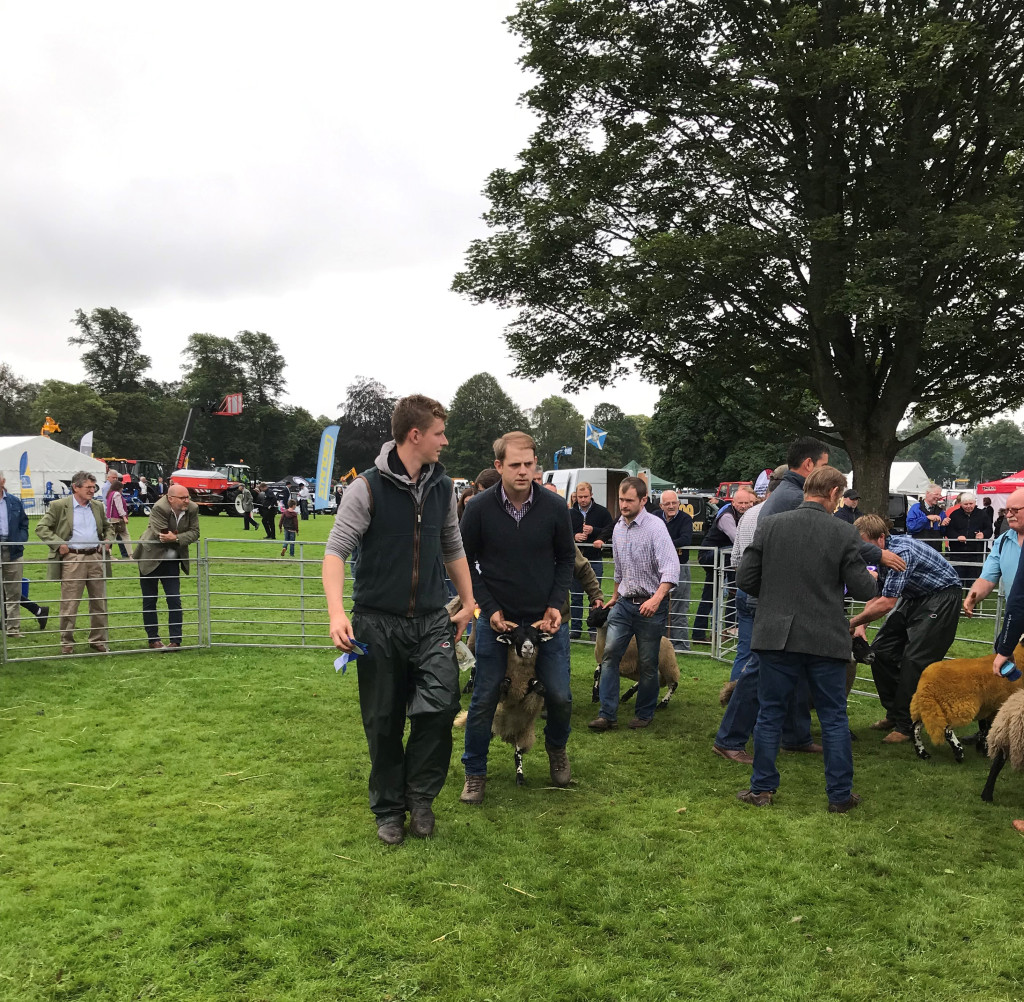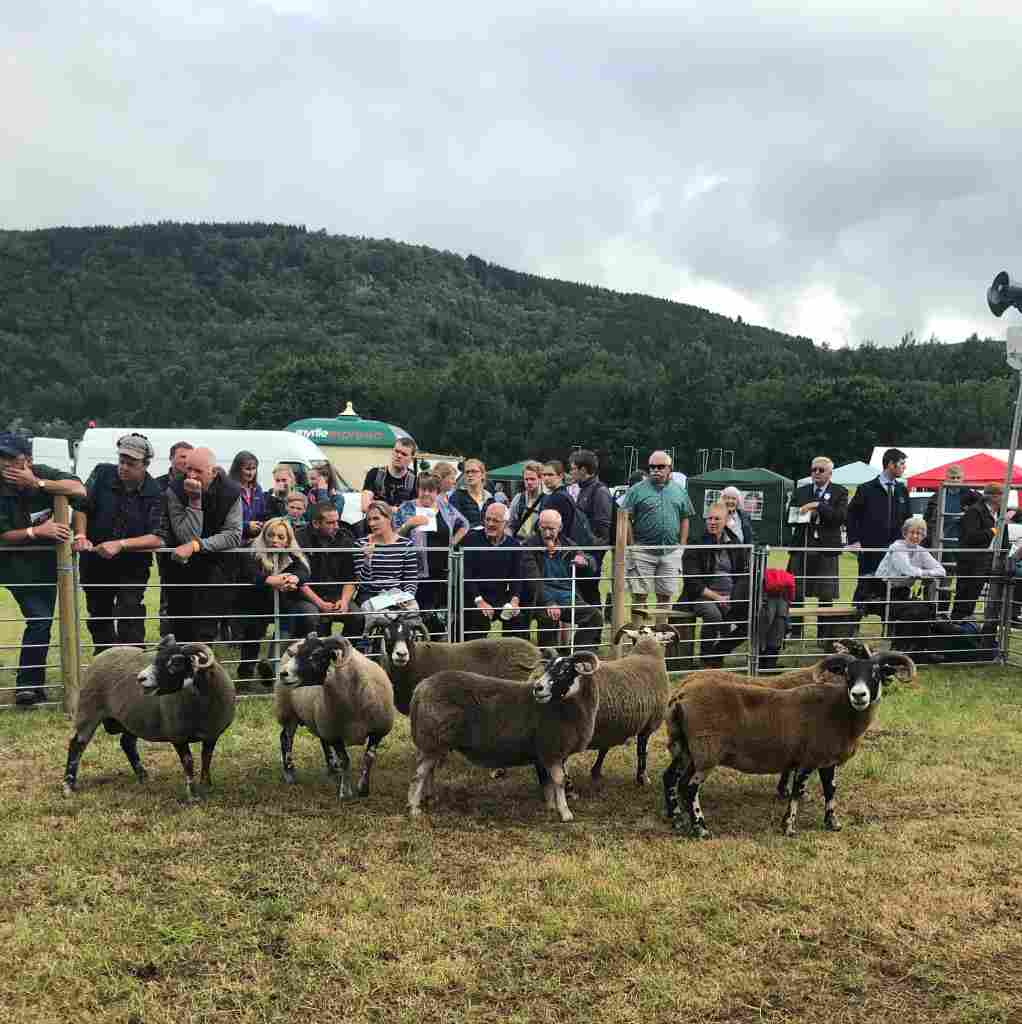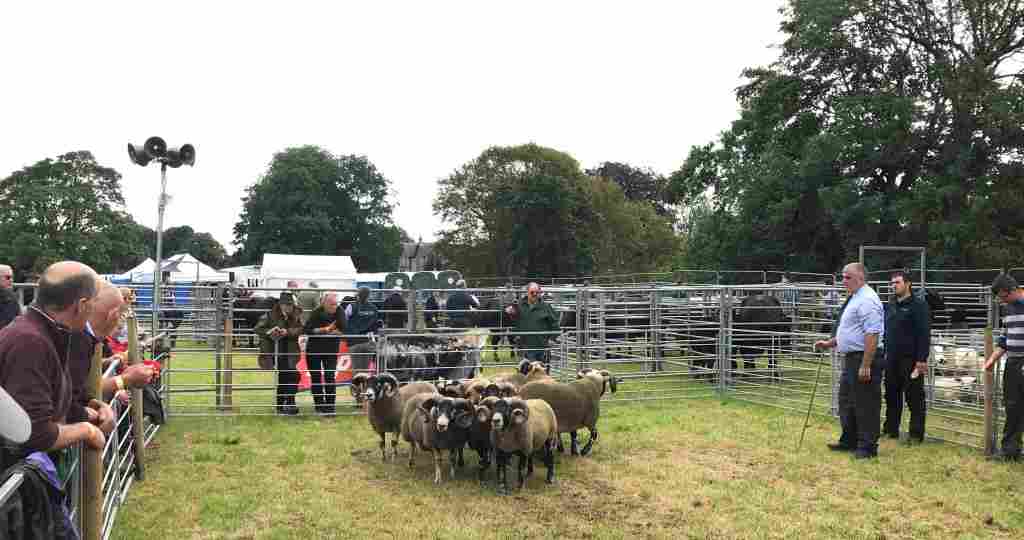Throughout the year there are a number of shows and livestock exhibitions across the country, particularly during the summer months. I can imagine for people out with the farming community it is difficult the understand why farmers exhibit their livestock in this way, but agricultural shows have been around for centuries.
Some shows are confined, which means exhibitors can only show their stock if they have a holding within a the restricted area.
James shows both his Blackfaces and Scotch Mules.
Why do we show sheep?
Livestock shows:
- Are an opportunity to take pride in our stock or progeny, allowing us to draw comparisons between our stock and other farmers stock.
- Provide the opportunity for the general public to connect with farmers and ask questions.
- Act as a social gathering.
- Act as an opportunity to market our livestock to potential buyers, championship winners will be listed in the Scottish Farmer publication.
- Are a tradition in history and for many it is important to continue these traditions for future generations.
- Provide an opportunity to attract people to the local area which could bring funds to the local community to run other events throughout the year.
How do we pick sheep for a show?
Sheep are selected for a show based on the exhibitors opinion. As James is checking his sheep on a daily basis it is likely some sheep will catch his eye early in the spring/summer season because of their style, presence, size or other desirable traits.
Once it gets closer to the time of the show James will pick the best sheep in his flock. A few days before the show (weather dependent) James will bring the chosen animals in from the fields, and wash, dress and colour the animals.
How we prepare a Blackface sheep before a class:
- Wash the head and legs with a damp cloth and fairy liquid to keep them clean.
- Brush the wool so it is lying correctly.
- Oil the horns so that they have a nice shine.
How the sheep classes work:
Typically a show will start with the judging of the males, followed by females, any group classes, before finishing with the championship in roughly the following order:
- 2nd Shear or over class
- Shearling class
- Ram Lamb class
- Ewe class
- 1 Crop Ewe class
- Gimmer class
- Ewe Lamb class
- Group of three
- Championship
- Opposite to Champion – (if Champion and Reserve are same sex)
All sheep which have picked up a 1st prize position in their class are eligible for the Championship.
Champions of their breed will then go on to compete for the Interbreed Championship.
How are the sheep judged?
The show committee will nominate and then invite someone out of the area with experience in the breed to judge. On the day the judge will make a decision based on the breed standard and their opinion of the finer breed points.
- The steward will shout the name of the next class and exhibitors will bring their sheep out of the pens to the edge of the ring, the sheep are then let into the ring one at a time. This allows the judge the opportunity to look at the traits and characteristics of each individual animal as they enter the ring.
- Once all the animals have entered the ring the judge will spend time studying the animals and drawing comparisons between them.
- Once the judge has decided on his placing of the sheep in the class he will use his shepherds crook to point out the animals he would like to keep in the ring. The selected sheep will be caught by their handlers and held in order. The remaining sheep will be caught and taken out of the ring.
- The judge will then handle all of the sheep in turn, checking their mouth for the position of their teeth, feeling their shoulders back and body to assess their confirmation and feeling either their testicles (if males) or bag (if a breeding female).
- If the judge is happy with their decision they will notify the steward. Sometimes the judge will swap the line up of the stock after they have handled the sheep.
Extra Info:
- Most local agricultural shows have invested money into metal pens to keep both the animals and the public safe on the day.
- Livestock is usually judged from 9am on wards and often at local shows is finished by 12/1pm meaning if temperature is high the animals won’t be exhibited during the hottest part of the day.
- If a lamb which hasn’t already been weaned is being exhibited at a show, James will take the ewe which is the lambs mother to the show as well to prevent it becoming distressed.
- Before taking our sheep to any show we ensure they are tagged correctly and complete a movement license on the morning of the show. This document will show the animals tag number and the movement destination. Once the animals return to the farm they must be held in isolation from the other stock. All movements are recorded with the Scottish Animal Movement Unit and during a Scottish Department inspection an Agricultural Officer will ensure James’s movement book matches the records.
Fun fact: East Kilbride is the longest running show in Scotland with the first show being held in 1772!
It’s important to remember there is lots more than livestock to see including; rural crafts and baking, trade stands, main ring entertainment, competitions and much more.
If we’ve missed something or you have any questions about showing sheep feel free to contact us we’d be more than happy to answer!
James & Isla






